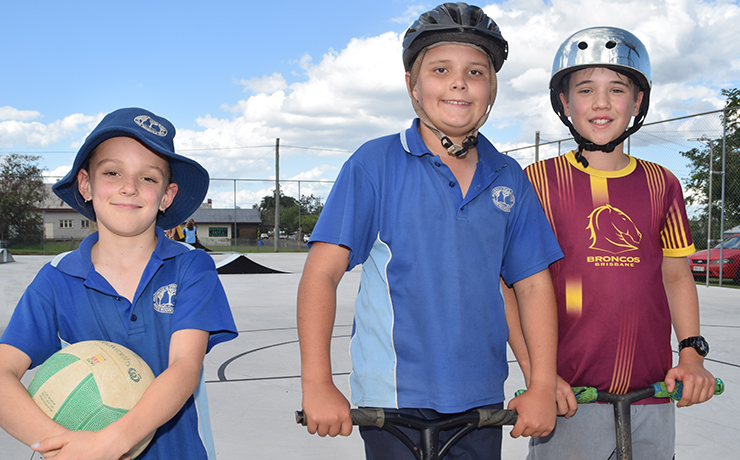
December 18, 2024
Amateur archaeologist Johan Vanderwalle – the man who uncovered the body of missing World War I soldier Jack Hunter almost 20 years ago – made an emotional return visit to Nanango last week to catch up with members of the Hunter family.
In 2006, Johan was given permission to excavate a possible burial site under a roadway at Zonnebeke in Belgium which had been stumbled upon by pipe layers.
The area is part of the Flanders region where some of the bloodiest battles of the Great War were fought.
Johan found five bodies, including an Australian soldier wrapped tightly in a groundsheet.
When his face was unwrapped, the soldier appeared to looking straight at Johan who decided then and there to find out more about this mystery man.
DNA matching soon confirmed the body belonged to former Nanango resident John (“Jack”) Hunter and, in 2007, Jack was laid to rest at the Buttes New British Cemetery at Polygon Wood.
But Johan’s link with Jack didn’t end there …
When he learned the story of Jack and his brother Jim (see below), Johan decided to memorialise the pair in a unique battlefield statue, “Brothers In Arms”.
Johan visited the South Burnett in 2016 as part of a fundraising trip to support the project.
But Johan’s dream remained just that until a Victorian resident, Bill Gibbins, donated the final $180,000 necessary to finish the monument.
The statue, which shows Jim Hunter cradling his dying brother, was cast in Melbourne, shipped to Europe and officially unveiled on September 25, 2022, near the site of the battle of Polygon Wood.
Early this month, Johan made a pilgrimage to Warrnambool to thank Bill for his generosity and present him with a miniature of the statue.
He then came to Queensland to catch up with Mollie, Jack’s niece whose DNA allowed the fallen soldier to be positively identified, and the remaining Hunter family members in Nanango.
Johan also wanted to visit the grave in Nanango Cemetery of Jack’s parents, Emily and Henry Hunter, and see the final resting place of other members of the Hunter family.
He was shown around the cemetery by Jack’s nephew Buddy Hunter, his son Michael and local councillor, Deputy Mayor Jane Erkens.
Johan also visited the Nanango RSL Club and Nanango war memorial.
* * *
The Story Of Jack Hunter
(as published by South Burnett Online in 2016)
Private John “Jack” Hunter, (1889-1917) was the oldest of seven children born to Henry and Emily Hunter.
Jack and his younger brother Jim enlisted in Brisbane in 1916 and sailed to Egypt. After some basic training they were despatched to Europe’s killing fields as part of the 49th Battalion.
They soon found themselves in Flanders Fields …
On the morning of September 26, 1917, Jack died in Jim’s arms before the battle for Polygon Wood – part of the Ypres campaign – had even begun.
The story goes that as the Diggers moved into position for the pre-dawn attack, the rising sun caught on a piece of metal on the battlefield, reflecting back into the troops’ eyes. Jack was sent out into no man’s land to retrieve it, but as he did so, he fell wounded.
He managed to crawl back to the trenches, where Jim cradled him as he died.
Jack had enlisted to help look after his younger brother. In the end it was Jim who tended to Jack’s last moments.
He carefully wrapped his brother’s body in a groundsheet, bound by wire, and buried him facing south-west in a temporary grave, vowing to return.
But just a few days later, the area was so badly churned up he could not find the spot.
After the war, Jim returned again to the former battlefield but still could not find the grave.
This wasn’t surprising as the former residents of the Zonnebeke region couldn’t recognise the area either, as the fields had been so heavily shelled.
Later a road was built crossing the temporary grave of Jack and four other Australian soldiers.
Jim never forgot his brother, and according to a family story, as he lay dying in the 1970s he suddenly opened his eyes and called out for Jack once more …
Related articles:



























